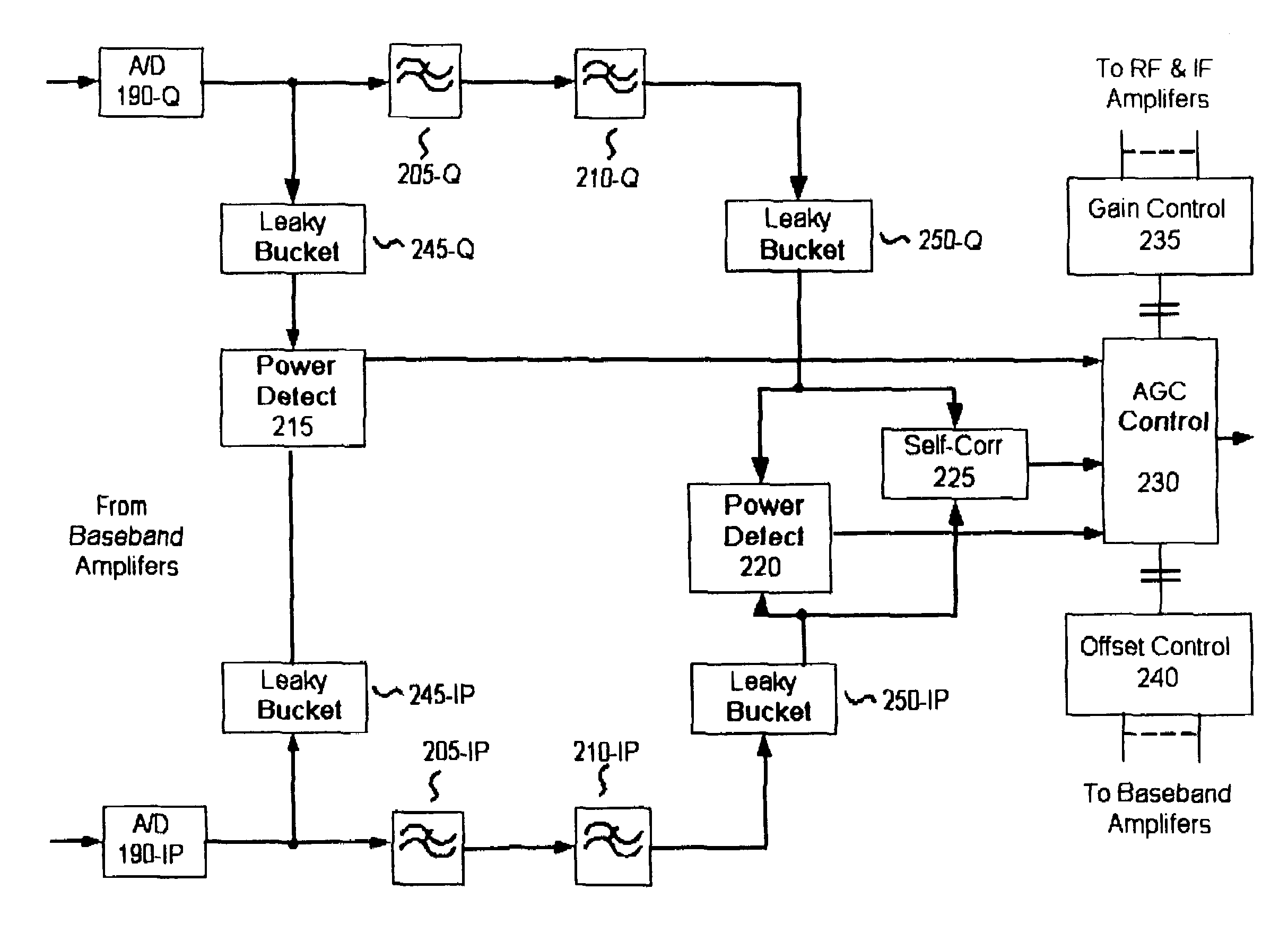Method and system for noise floor calibration and receive signal strength detection
a signal strength detection and noise floor technology, applied in the field of communication systems, can solve problems such as difficult circuit construction accuracy, difficult referring to the antenna, and significant gain variation between units
- Summary
- Abstract
- Description
- Claims
- Application Information
AI Technical Summary
Benefits of technology
Problems solved by technology
Method used
Image
Examples
Embodiment Construction
[0032]The basic structure of a receiver used in an embodiment of the present invention is shown in FIG. 2. Here, a wideband antenna 115 receives a radio frequency (RF) RF signal and provides it to an RF amplifier 120, and a particular channel or signal within the band is preferably selected by varying the local oscillators 130 and 180. In the embodiment, the RF signal preferably conforms to the IEEE 802.11a standard, has a frequency in the 5 to 6 GHz band and is quadrature modulated to carry 6 to 54 Mbps. In this embodiment, the signal can carry up to 54 Mbits of data or more and lies within one of twelve 20 MHz wide slots, eight within a 5.15-5.35 GHz band and four within a 5.75-5.85 GHz band. The signal in this embodiment is a coded orthogonal frequency division multiplexed (OFDM) signal using 52 subcarriers spaced 312.5 kHz apart. It is understood, however, that while the following detailed description is made in the context of an IEEE 802.11a system, the invention described here...
PUM
 Login to View More
Login to View More Abstract
Description
Claims
Application Information
 Login to View More
Login to View More - R&D
- Intellectual Property
- Life Sciences
- Materials
- Tech Scout
- Unparalleled Data Quality
- Higher Quality Content
- 60% Fewer Hallucinations
Browse by: Latest US Patents, China's latest patents, Technical Efficacy Thesaurus, Application Domain, Technology Topic, Popular Technical Reports.
© 2025 PatSnap. All rights reserved.Legal|Privacy policy|Modern Slavery Act Transparency Statement|Sitemap|About US| Contact US: help@patsnap.com



